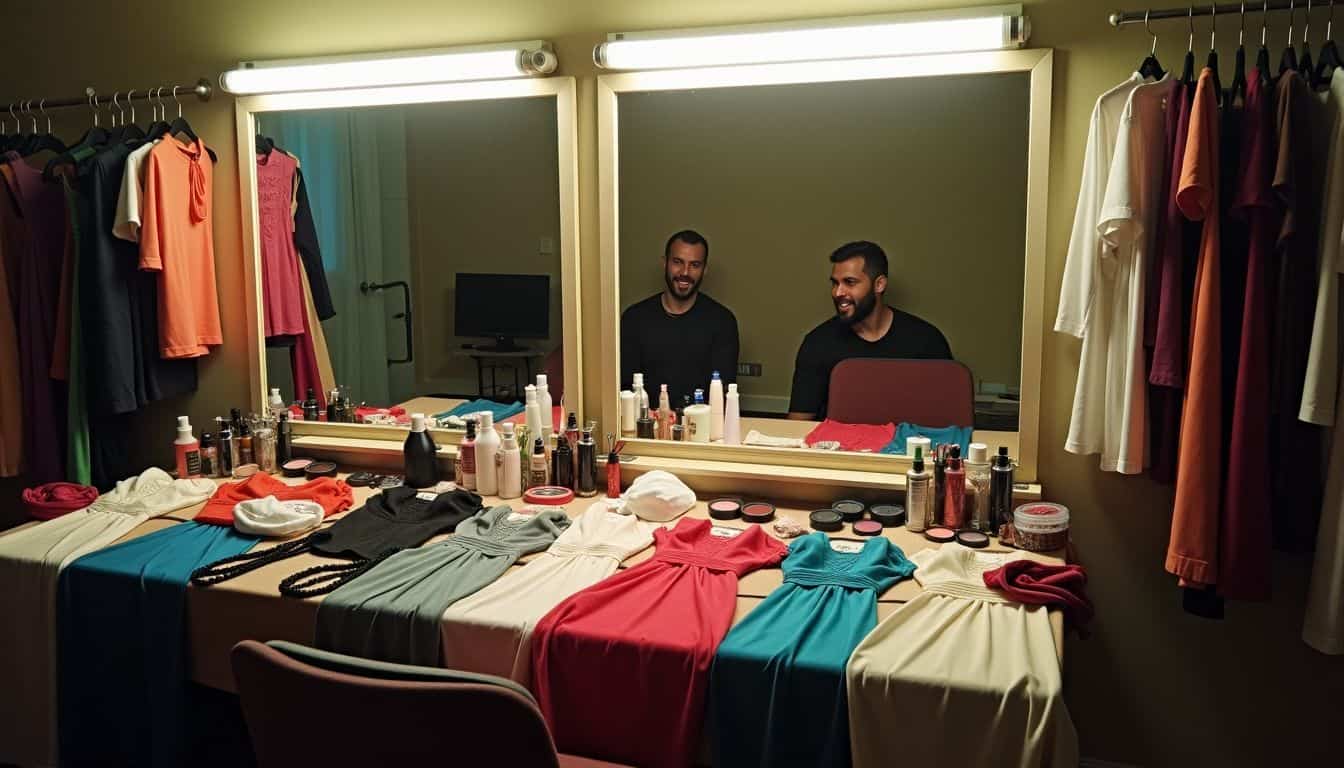Are you wondering, “Should I Become a Stripper,” but unsure if it fits your life? Exotic dancers don’t all look alike—women of many ages and shapes take the stage nightly. This blog will walk through 10 reality checks you’ll face in strip clubs, from fees and safety to self-esteem and social views.
Read on before grabbing those high heels.
Key Takeaways
Stripping takes physical stamina and emotional toughness—shifts usually run late, ending around 2 to 4 AM, and dealing with rejection is part of the routine.
Most dancers earn roughly $400 a night, totaling around $76,800 per year if they work part-time hours, but expenses quickly add up. There’s clothing to buy ($30-$100 per outfit), specialty shoes ($60-$200), and club fees, sometimes costing up to $200 per night.
Workplace safety can differ greatly from one venue to another—better clubs provide trained security staff, clear anti-harassment guidelines, and working security cameras.
To manage outside judgment and social pressures, dancers often adopt alternate identities. Many keep their stripping careers private—even from close friends or family.
Dancing can offer flexible schedules—with some performers choosing to work only three nights per week—but it also brings physical injuries, emotional stress, and harder-to-explain gaps in the resume.
Table of Contents
Understanding the Demands of Stripping

Stripping needs more than just good looks and dance moves. The job tests your body with long shifts in high heels while testing your mind through tough customer talks and club politics.
Physical and emotional demands
Exotic dancing can really wear down your body. You have to stay fit enough to perform for hours—in high heels, no less. Over time, your ankles and knees take a beating. Pole tricks and constant stage movement often lead to injuries, like strained muscles or bruises.
This type of dancing demands peak fitness; you’re on your feet all night and must smile through every set, even while chatting with customers.
Dancing tests not just your body, but your spirit. You need thick skin to handle rejection and still shine on stage.
The emotional side of exotic dancing is just as challenging as the physical side. You’ll need emotional toughness to cope with rude customers and social stigma. Clients often reject dancers and pick someone else instead, making the job emotionally draining.
Constantly looking for customer approval can make you question your own worth. Working lap dances or entertaining in the champagne room means setting firm limits—but still staying cheerful.
A house mom can lend a listening ear and guidance, but it’s your own inner strength that determines how far you’ll go.
Working hours and environment

Strip clubs run on very different hours than regular office jobs. Most clubs open during evening hours, staying busy till around 2 to 4 AM. Lyla Rose, a dancer herself, only works three nights a week, with shifts typically under seven hours long.
This lighter schedule gives her much more free time compared to her old 9-to-5 routine. Now, she spends around 12% of her entire week working, rather than the 23–29% she did before.
Workplaces for dancers can range from flashy and upscale clubs to darker, grittier bars with loud music and low lighting. You’ve also got smoke, alcohol, and even occasional drug use to handle.
Bouncers help ensure safety—but they can’t always stop every issue.
Late-night shifts can really affect your social life and mess with sleep schedules. Many weekend hangouts with your friends who have regular hours will happen without you. Your body needs to get used to dancing in heels for hours and staying energized way after midnight.
Plus, thick skin is essential, since you’ll face rejection regularly and need to protect your self-esteem.
Then there are house fees, which clubs charge dancers each shift. These fees reduce your earnings, meaning new dancers often need extra shifts, at least until they have regular customers.
Financial Considerations

Money matters when you step into the world of stripping. Your bank account could grow fast with cash tips, but you’ll need to budget for outfits, shoes, and club fees first.
Potential earnings

Stripping can bring in great cash if you’re willing to do the work. Most dancers earn around $400 per night, but this varies widely depending on hustle and location. On busy evenings, you could pocket more than $1,000—while slow shifts, after paying club fees, might only leave you with about $100.
If you worked part-time, say four days a week for six hours each shift, you’d bring in around $76,800 a year, before taxes. Many seasoned dancers aim for at least $500 each shift to make the effort feel worth it.
I never expected to make this much as a dancer. Some nights I walk out with more cash than my friends make in a week at their office jobs.
Your comfort level with customers, along with your pole dancing skills, greatly affect your tips. The name you pick for the stage and your confidence levels also shape how much you’ll earn.
Location definitely matters—Manhattan clubs usually pay better than ones in smaller cities such as Denver. Now, let’s talk about some startup expenses you’ll have to cover, even before your first night dancing.
Initial investment and expenses
Becoming a stripper involves more upfront costs than most people expect. For basic stage outfits alone, you’ll spend anywhere from $30 to $100. Good dance shoes, with heels four inches or higher, will run you $60 to $200—and cheap footwear can make your shifts miserable.
Clubs often charge dancers a nightly house fee, sometimes as high as $200, just for the privilege of working. Then there are tips: you’ll need cash ready each night, to tip bartenders, DJs, or the bouncers on shift.
Certain cities like Denver require special dancer permits, adding another $175 to the initial expense. Before earning my first dollar, I’d already spent more than $400 during my debut week.
All these nightly costs take a considerable chunk out of your earnings. Managing these ongoing expenses, while steadily building a steady group of regular clients for VIP dances, is key to making this job worthwhile.
Preparing for the Job

Getting ready for a stripper job takes serious prep work. You need to scout clubs that match your style and practice your moves before you hit that stage.
Finding the right club
Picking the right strip club can totally change your experience at work. Try visiting a few different clubs over a week or two, so you can get a real sense for each place. Watch closely—observe how managers run things, the vibe of the customers, and how dancers interact with people around them.
Usually, clubs fall into three basic categories. Upscale clubs attract wealthy folks, while neighborhood places bring in local and casual crowds. Rougher dive bars tend to have tougher customers.
Each place charges their own fees—higher-end clubs typically require dancers to pay 10-20% of earnings in staff “tip-outs”.
Your workplace shapes your experience more than anything else in this industry.
Chat with dancers who already work at these clubs to find out the real situation. They can tell you honestly about house fees, tipping policies, and good spots to buy costumes. Take time in making your choice—picking a club that matches you well can mean more cash and a safer experience overall.
The women already there know what managers and customers are really like. While you prep for that first audition, your stage name and persona will naturally come together.
Planning your audition
A successful strip club audition takes thoughtful prep—and that starts with research. Visit clubs on their busiest nights to check out the work area and gauge dancers’ earnings firsthand.
Doing this helps you find spots that match your personal vibe and financial goals.
Always call clubs ahead of time, double-checking audition hours, and bring every required ID document—they’ll definitely ask. Most dancers face rejection at least once, so audition at multiple places to boost your odds.
Your outfit counts, big-time; choose something that radiates confidence and fits the club’s atmosphere. It’s not about sacrificing your dignity—it’s about making a memorable first impression.
Strip club managers want dancers who have skill and personality. Practice your dance moves before audition day, but don’t worry about being flawless. Many successful dancers started with zero formal training.
Managers care more about seeing your outgoing side and how well you’ll interact with customers. Persistence matters; one rejection doesn’t mean another club won’t say yes. Some dancers audition at five or six places before finding their ideal spot.
Bring a supportive friend along, if permitted, for encouragement and to ease audition nerves.
Building confidence and skills
Gaining confidence for the stage begins with getting comfortable in high heels. Before my first audition, I practiced for hours at home—walking, dancing, and spinning in platform shoes.
Taking pole dancing classes will improve your skills with climbs and spins. These basic moves set you apart from beginners and impress managers at clubs. Your choice of music matters just as much as your dance skills.
Choose songs with varied tempos to showcase your versatility at auditions. Club owners often expect you to perform to both up-tempo tracks and slower beats. Your look is equally important.
I invested in attractive clothing that suited my body shape and boosted my confidence. Creating an appealing stage name is also helpful—it protects your privacy and builds your dance identity.
Separating this persona from your real name helps keep healthy boundaries and improves your confidence on stage.
Safety and Security

Safety matters more than money in this job. You need to know how to spot danger signs and set firm limits with customers.
Understanding workplace risks
Strip clubs carry real risks you should know. Harassment, violence, and privacy breaches regularly affect many dancers. This job can impact your self-worth, posing threats that hit both your body and mind.
High-quality clubs install security cameras and hire trained guards to protect employees. Poorly managed venues often let problems slide until someone ends up getting hurt. I worked at three separate spots and saw clearly how safety measures changed everything.
At the best club, bouncers acted quickly, stepping in before issues escalated.
Your safety isn’t just about physical protection—it’s about maintaining your boundaries and mental health in an industry that often tests both.
Reliable clubs post clear customer behavior guidelines and instructions on handling fights. They enforce strict zero-tolerance policies against harassment or abuse of any kind. Emotional wellness matters too—plenty of dancers gain comfort from counseling, therapy, or simple self-care routines.
Your personal safety partly relies on how seriously management commits to protecting employees, and partly on your own awareness. Smart dancers spend time checking venue reputations carefully before auditions, always trusting their gut if something feels off.
Protecting your personal boundaries
Personal safety is your top priority in strip clubs—plain and simple. Smart dancers never reveal their real names, phone numbers, or home addresses to any clients. Clearly communicate your personal boundaries; club staff can step in to support and protect you.
Many dancers hold their keys tightly between their fingers as a quick self-defense tool, and jot down cab info whenever they leave after work. Staying sober during your shifts helps you notice possible danger early, so you can take action quickly.
Your self-worth matters more than any amount of tip money, and you always have the right to say no to dances or touches that feel unsafe or uncomfortable.
Establish solid boundaries from your first day, making it clear exactly what’s okay for you—and what’s definitely not. Some clubs have safer policies and friendlier work cultures than other places, so always chat with dancers already working there before auditioning.
Most venues do have bouncers and security cameras, but it’s still essential to create your own safety precautions. Money can get tight sometimes, causing dancers to feel pressured to bend their own rules.
Protect yourself by listening to your instincts, spotting risky situations early, and leaving any club that fails to respect your boundaries.
Social and Personal Impacts

Stripping affects more than your bank account—it touches your social circles and self-image. Friends and family may judge your choice, while dating can get tricky when partners struggle with jealousy or hold outdated views about adult entertainment.
Dealing with societal stigma
Society often places harsh judgment on women working as strippers, creating real struggles for those in the profession. These negative opinions can severely affect their sense of self-worth and damage personal relationships.
One study revealed that college students employed as topless dancers often create another identity to handle outside judgment. They emphasize their identity as students first, dancers second.
This separation helps protect their mental well-being—but it comes at a cost. Most student dancers keep their jobs secret from family and friends, which can feel like living a “double life”.
I’ve watched friends struggle to keep these separate lives apart, all while striving to hold onto their true selves.
The hardest part isn’t the dancing—it’s dealing with what people think about you when they find out what you do.
The stigma of stripping can chip away at a dancer’s self-esteem and complicate personal connections. To resist these harmful attitudes, dancers find different ways to rewrite the stories around their work and identity.
They use storytelling to reshape how others perceive them and carefully separate their dancing personas from daily life. This practice creates boundaries around each part of who they are.
But managing society’s negative judgments daily requires energy they could use elsewhere. Still, many dancers display incredible strength by leaning on their student status or other identities as protection against criticism.
Managing relationships and personal life
Stripping can take a big toll on your personal relationships. Many dancers struggle with self-esteem, especially if their partners don’t accept their job choices. The social stigma around stripping also makes dating a real challenge.
Many dancers report feeling like they’re living two separate lives. Family and friends might reject what you do for work, forcing tough decisions about who stays close and who doesn’t.
Late-night shifts mean missing lots of social events, which can create distance with people you care about. Loved ones who keep daytime hours may find it hard to stay connected. Dealing with other people’s judgments can chip away at your self-confidence, making it difficult to keep a positive mindset.
Dating gets tricky too, since new partners react differently to learning about your career—some may support you fully, but others might misunderstand boundaries or pressure you to leave the job behind.
Pros of Becoming a Stripper

Stripping offers real perks beyond just the cash flow. The job gives you control of your schedule and the power to build your own brand on your terms.
Flexibility and independence
Dancers who choose stripping often enjoy a freedom that traditional workers only dream of having. Working just three nights a week means four full days open—to relax, chase dreams, or grow personally.
Lyla Rose, for example, traveled for 224 days during her 587-day dance career. At her previous desk job, she only managed 15 days off in three and a half years! Controlling your own schedule boosts confidence and helps you value yourself more.
Many dancers even rediscover forgotten hobbies—like painting, crafting, or writing—activities that faded away in traditional work routines. The nighttime hours also keep daytime free for volunteering, taking classes, or starting side businesses.
Few jobs offer this kind of flexible lifestyle or this level of control over your own time.
Financial opportunities
Stripping can offer women life-changing money. Top earners bring home around $76,800 per year before taxes—about $400 a night on average. Depending on hours worked, dancers typically make between $48,000 and $200,000 a year.
Your location impacts pay significantly, though. Manhattan clubs tend to pay far more than clubs in cities like Denver. I danced in Las Vegas for three years, and my earnings shifted wildly depending on seasons, tourists, or special events.
The steady cash improved how I felt about myself, because I finally gained control of my finances. For many women, money draws them in initially—but they stick around for the freedom.
Sayoni Nyakoon, for instance, began dancing strictly for income, then stayed for the independence she discovered.
Women’s earning goals vary widely, too. One dancer might aim for $500 per shift, while another feels satisfied earning $300 during an eight-hour night. Stripping provides quick money that few other jobs can deliver without degrees or extensive experience.
Next, we’ll cover emotional and physical hurdles you might face alongside these financial gains.
Cons of Becoming a Stripper
The dark side of stripping often gets hidden behind the glitz and glamour. Working in clubs takes a toll on your body and mind, while social judgment can crush your self esteem.
Emotional and physical challenges
Stripping requires keeping a smile on your face, even during your toughest days. Many dancers face self-doubt, especially if tips run low or crowds turn cold. Tough shifts can hurt your self-esteem—dealing with customers who step over boundaries or throw rude remarks your way.
Your body suffers too, with pole routines and hours spent in high heels leaving lasting pain. Back troubles, knee injuries, and constant fatigue are common among dancers due to these physical demands.
Social stigma adds further emotional strain. Family members, friends, and potential partners might judge or misunderstand you because of your job, creating a sense of isolation. That isolation sometimes leads dancers into emotional struggles or deeper mental health issues.
Pressure to maintain a flawless appearance makes it worse, since clubs often enforce strict standards on weight, looks, and style. Burnout is common in dancing because of all these stresses combined; many dancers last only a few years before exhaustion and emotional strain force them to move on.
Long-term considerations
Exotic dancing can offer decent money, sure—but it often carries long-term issues people don’t usually expect. Lots of dancers find saving money tricky, even after a great shift.
Club fees, makeup, outfits—all these expenses quickly shrink the night’s profits, making budgeting tough. Over time, customer reactions—good or bad—can really chip away at your self-esteem.
I’ve watched friends leave dancing behind with very mixed emotions about their time performing.
Career longevity can also become tricky. The industry typically prizes younger dancers, which makes planning your next move tougher as you get older. Some dancers face big resume gaps that they’re unsure how to explain during job interviews.
Others deal with lasting struggles about body image that first popped up during their performance years. Social judgments can stick around well after you’ve left dancing behind, impacting new career paths and personal relationships, too.
HuffPost shared stories of former exotic dancers who experienced judgment years later—even working in totally different jobs.
Deciding If Stripping Is Right for You

The choice to strip must match your core values and life goals. Your reasons for entering this field will shape your success and mental health on the job.
Evaluating your motivations
First, think carefully about your reasons for wanting to become a stripper. Most people choose this profession for financial reasons—studies confirm money strongly motivates dancers to enter this field.
Social media often portrays stripping as alluring and glamorous, but the truth can be very different. To thrive in this competitive profession, you need a high level of self-esteem and inner strength.
Many new dancers enter clubs dreaming about quick cash, then quickly learn it’s tougher than expected. If you’re naturally shy or introverted, connecting with customers could be difficult.
Successful dancers typically have confidence, humor, and great social skills to help them stand out. Beyond money, you’ll need deeper reasons due to heavy physical demands and emotional pressure.
You must also feel comfortable enough with yourself to handle potential judgment from others, while keeping your mental health in good shape.
Considering your long-term goals
Your reasons may point to stripping, but your future goals deserve careful consideration too. Dancing at clubs brings fast money, sure—but it rarely creates lasting career paths beyond the nightlife scene.
Many dancers notice a drop in earnings after a few years, especially as newer, younger performers step onto the stage. Dealing with jealous coworkers and pushy customers crossing personal limits can also harm your emotional well-being and self-esteem.
I danced at a club myself for three years; I’ve watched friendships strain and family relationships suffer for many other women too.
Consider your five-year plan carefully. Does stripping match or clash with your future ambitions? Some dancers successfully save enough money to start online businesses or pay for college degrees.
Others burn out, exhausted from late nights and physical stress. Constantly wearing high heels and missing sleep can eventually cause pain and health issues. Outgoing, sociable personalities often handle it better—but even confident people find it hard to separate their stage identity from everyday life.
How Will the Adult Entertainment Industry Transform in 2025?

Big changes are coming to adult entertainment in 2025. Members of “The Performer’s Guide”, a Facebook group for dancers, predict increased rates for performances, and audience reactions seem split.
Performer MiiMii Beaulieu says clients will likely pay varying prices, depending on their requests. Scottym Swan adds that many fans overlook dancers’ hidden expenses—but he feels most customers will willingly pay higher fees.
Dancers with greater self-confidence can take advantage and set higher prices. Cristy Jj emphasizes that authentic human interactions remain essential, since computer technology can’t reproduce genuine connections.
Outgoing dancers who thrive on audience interaction can benefit greatly from this dynamic.
Performers will face fresh trends in the coming years. Many dancers already operate online stores to earn extra money beyond club performances. It’s becoming more important to take pole dancing lessons, since performance standards keep getting higher.
The difference between dancing and activities like prostitution will likely remain clear, though new regulations could emerge. Smart performers will prioritize their health, avoiding illnesses that might stop them from earning money.
Popular movies featuring dancers, including the success of “Hustlers”, show rising public interest in performers’ personal experiences—possibly helping reduce stigma around the profession by 2025.
People Also Ask
Will working as a stripper impact my self-worth?
It can happen. You might feel more confident by appreciating your body and skills. But harsh comments or judgmental people can lower your self-esteem—so stay prepared for both sides.
Can I sell things online while working as a stripper?
Absolutely! Many strippers earn extra money by offering products online. This can be pictures, videos, or branded products—stuff your fans may happily buy.
Is being outgoing necessary to be a successful stripper?
It’s helpful to be outgoing, since you’ll chat with many strangers each night. Even shy folks can build these skills over time—though it’s simpler if meeting new people feels natural.
What should I realistically consider before becoming a stripper?
Income can vary wildly from week to week. Rude or disrespectful customers can hurt your feelings, so having thick skin helps. Fees paid to the club can take a big bite out of your earnings. The work can be physically exhausting. Having a reliable backup plan for leaving dancing is essential.
References
https://www.wikihow.com/Decide-if-You-Should-Become-a-Stripper
https://cornerstone.lib.mnsu.edu/cgi/viewcontent.cgi?article=1921&context=etds
https://thefinancialdiet.com/financial-realities-stripping-living/
https://www.wikihow.com/Become-a-Stripper
https://www.youtube.com/watch?v=UnXPh0idhZM
https://pdxscholar.library.pdx.edu/cgi/viewcontent.cgi?article=1202&context=mcnair
https://www.wiggleclub.com/stripper-safety-ensuring-a-secure-work-environment/ (2024-01-15)
https://pmc.ncbi.nlm.nih.gov/articles/PMC3330830/
https://www.acsu.buffalo.edu/~trautner/Trautner_Collett_Symbolic_Interaction.pdf
https://www.huffpost.com/entry/college-graduate-stripper_n_5c93dc5ae4b057f733080fba
https://commons.emich.edu/cgi/viewcontent.cgi?article=1001&context=theses
https://www.facebook.com/groups/theperformersguide/posts/3925883194332992/
